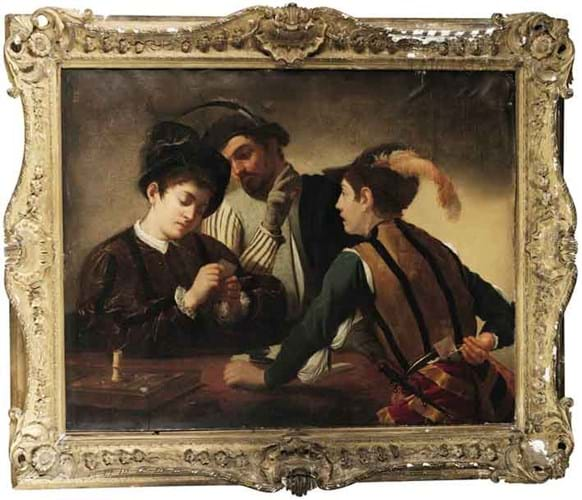
The dispute came before the High Court last week and is scheduled to run for four weeks with the vendor, Lancelot William Thwaytes, maintaining that the auctioneers were negligent in their handling of the consignment but Sotheby's rejecting that claim outright.
The picture in question was sold at Sotheby's Olympia in December 2006 where it was catalogued as by a 'follower' of Caravaggio and estimated at £20,000-30,000. It was knocked down at £42,000 to the late collector and art historian Sir Denis Mahon, who then identified the picture as an original Caravaggio and valued it at £10m.
Sir Denis died aged 100 in 2011.
The claim filed by Mr Thwaytes alleges that Sotheby's did not carry out enough research into the picture, saying that the auctioneers should have consulted independent experts and subjected the painting to greater scientific analysis than was actually undertaken. It also states that they failed to advise Mr Thwaytes properly in relation to the painting.
Sotheby's, however, have robustly denied each allegation and maintain the view that the work was catalogued correctly and that it is an anonymous copy of Caravaggio's The Card Sharps (the original being in the Kimbell Museum in Texas).
In a statement, Sotheby's said: "The painting is not by Caravaggio and is clearly inferior in quality to the universally acknowledged original in the Kimbell Museum." They added: "Our experts were entirely competent to make this assessment," adding that they were "entitled to rely solely on its own expert staff to research and catalogue the painting".
They also point out that among their staff who catalogued the painting was Letizia Treves, who is now curator of Italian and Spanish Paintings 1600-1800 at the National Gallery, and who will be testifying in Sotheby's defence.
Technical Issues
With regard to the scientific analysis, an x-ray of the painting was made before the sale at Mr Thwaytes' request, but Sotheby's have rejected the assertion that they should have carried out further infra-red or pigment analysis on the basis that this is not accepted practice for works which are unanimously deemed by specialists to be anonymous copies.
Even if Mr Thwaytes does succeed in demonstrating that the appropriate level of research and advice was not undertaken by the auctioneers, he would also have to prove a financial loss by convincing the judge that, on the balance of probability, Sir Denis's attribution is correct.
In weighing up the academic argument, the claim lists a number of experts in support of Sir Denis's attribution, including Antonio Paolucci, the director of the Vatican Museums, and Mina Gregori, the art historian and author of several books on Caravaggio. Coincidentally, the latter has recently identified another work in Italy as Caravaggio's original painting of Mary Magdalene in Ecstasy.
However, Sotheby's appear confident that the weight of scholarly opinion is behind them. Extracts from their defence documents made available to ATG state that "the authors of the two most recent monographs on Caravaggio's work (Professor Sebastian Schütze of the University of Vienna and Dr Professor Sybille Ebert-Schifferer, director of the Bibliotheca Hertziana, Max Planck Institute, Rome)... have rejected the painting as an anonymous copy".
That position is also supported by Caravaggio scholar Professor Richard Spear, who will be appearing as one of the expert witnesses at the High Court this week.
Overall, only around 50 paintings by Caravaggio were known at the time of the artist's death in 1610 and, such was his profound influence on Western art, large numbers of copies are known to exist. Works purporting to be originals have been known to emerge from time to time.
Sir Denis had made two earlier and accepted attributions in the 1970s: Martha and Mary Magdalene (now in the Detroit Institute of Arts) and The Crucifixion of Saint Andrew (Cleveland Museum of Art). He also authenticated the work Christ taken into Captivity, which emerged from an Irish college in 1992.
The case continues.





